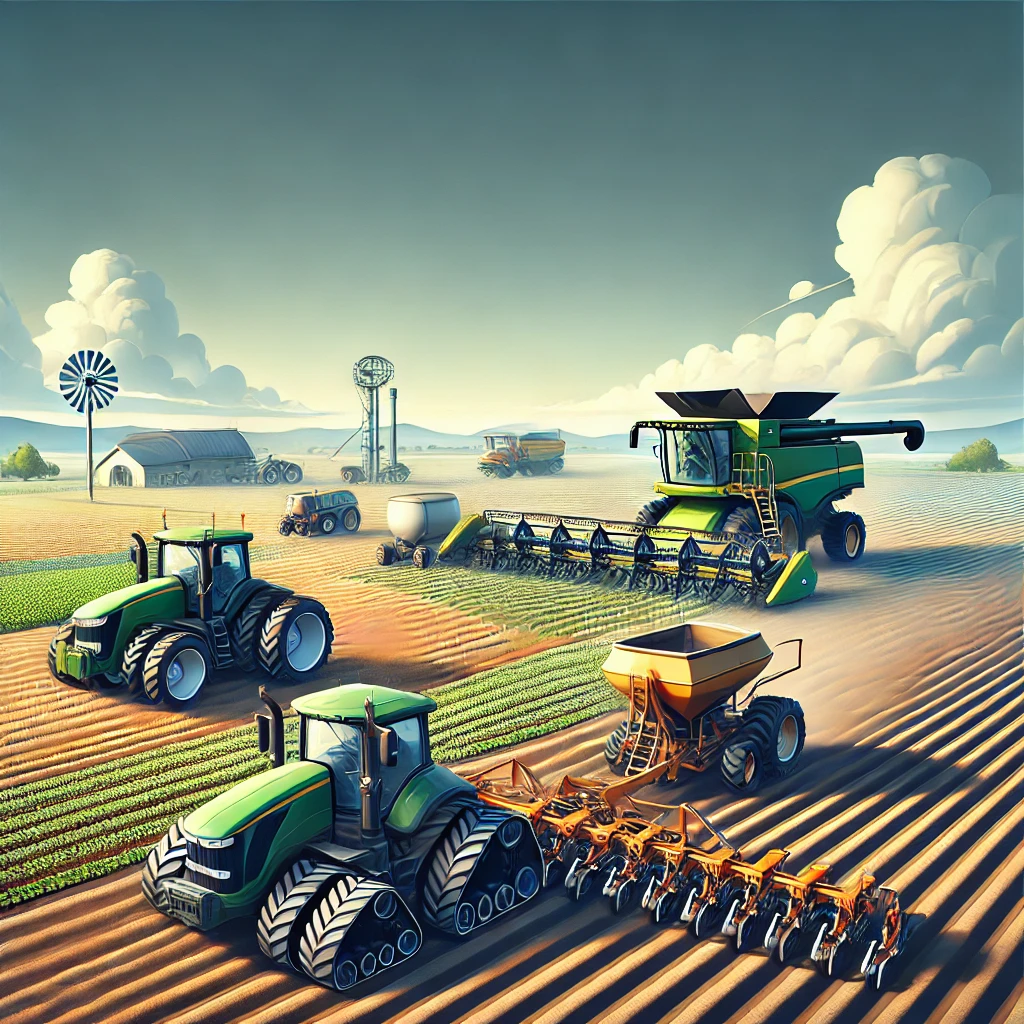and i know that agriculture engineering also becomes broad field and its combaine little bit of every engineering approches.
so want to know more about that.
and i know that agriculture engineering also becomes broad field and its combaine little bit of every engineering approches.
so want to know more about that.

Agricultural machinery plays a crucial role in modern farming, transforming it from labor-intensive, manual processes to highly efficient, large-scale operations. These machines are designed to perform specific tasks that are essential in the agricultural cycle, such as soil preparation, planting, irrigation, harvesting, and post-harvest processing. By automating repetitive and physically demanding tasks, agricultural machinery significantly increases productivity and reduces the time and effort required to cultivate crops.
The use of machinery in agriculture has evolved over time. Early tools, like the plow, were simple and manually operated, but with the advent of the Industrial Revolution, more advanced, mechanized systems emerged. In the 20th century, the introduction of tractors, combine harvesters, and seed drills revolutionized farming practices. Today, machinery is not only powerful but also smart, with technology like GPS-guided systems, sensors, and even autonomous equipment enabling precision farming.
Looking ahead, innovations in automation, artificial intelligence (AI), and sustainability are shaping the future of agricultural machinery. These advancements hold the potential to make farming more efficient, environmentally friendly, and better suited to feeding a growing global population.
Agricultural machinery is categorized based on the tasks it performs in the farming process. Each type of machinery serves a specific function, ensuring that every stage, from soil preparation to harvesting, is executed efficiently. Below are the main categories of agricultural machinery and their respective functions:
1. Tillage EquipmentTillage is the process of preparing the soil for planting by mechanically agitating it, which helps in weed control, soil aeration, and breaking up clods. Key types of tillage equipment include:
Planting equipment ensures that seeds are sown evenly and at the correct depth for optimal germination and growth. Modern planting machinery can handle large fields with precision, saving time and labor.
Effective irrigation is key to maintaining healthy crops, especially in areas with irregular rainfall. Irrigation equipment is used to provide consistent water supply to crops.
Harvesting equipment is designed to collect mature crops from the field with minimal damage and loss. This equipment is crucial for reducing labor costs and speeding up the harvesting process.
Once crops are harvested, they often need further processing to prepare them for sale or storage. Post-harvest equipment ensures that this stage is handled efficiently.
Each type of machinery addresses a specific challenge in the agricultural process, contributing to the overall efficiency and productivity of farming operations.
Agricultural machinery has become an indispensable part of modern farming, driving increases in productivity, efficiency, and sustainability. From the early days of simple plows to today's advanced, GPS-guided tractors and autonomous harvesters, machinery continues to evolve in response to the growing demands of global agriculture.
Agricultural engineers and technical professionals play a key role in the ongoing development and refinement of these machines, ensuring that they are effective, sustainable, and adaptable to the diverse needs of farms around the world.